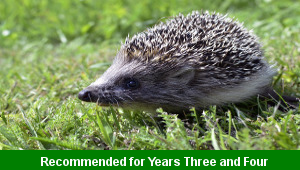Lesson Three – Plant Labels

This science teaching pack for Key Stage Two gets the children to develop and test some of the special ways that can be used to classify and group different types of plants by their matching characteristics.
The class can collect and present information about different plants that can be found growing around the school grounds or in a local park to use when making comparisons.
Download this teaching pack including a lesson plan, classroom activities and an interactive presentation to develop and test some of the special ways that can be used to classify and group different types of plants by their matching characteristics
Activities in this teaching pack include display posters to explain how to differentiate between plants found growing in the school grounds or a local park and a template to identify and classify different types of plants by their observable matching characteristics.
The interactive presentation can be used to explore how to test ways of classifying and grouping different types of plants to show what makes them unique.
This lesson is part of a science scheme of work to get the children to identify, group and compare some of the different plants and animals that live in a variety of habitats around the world. There are teaching activities for shared learning, differentiated worksheets to support independent learning and interactive presentations to introduce concepts and key skills.
-

Rounding Hundreds
Explain and model how to round some different numbers to the nearest hundred based on the place values of the digits in each number
-

Rounding Tens
Identify and record how to round some different numbers to the nearest ten based on the place values of the digits in each number
-

Classic Animal Stories
Investigate the structure and content of classic works of fiction by significant authors with animals as the main characters
-

Cities, Towns and Villages
Research and present the history of a range of different buildings and people that are part of the local community using a school exhibition
